|

|
In Biome Beasts: Boreal Forest Animals, readers will discover how boreal beasts survive the harsh climate. The boreal forest teems with wildlife during the short, mild summer. This changes quickly when fall arrives. Only the living things that have adapted to the region's freezing temperatures and frozen land can remain in the forest year-round. The Biome Beasts series is NGSS-aligned and packed with interesting facts and vivid photos that introduce readers to a variety of land and water animals. Each book includes a glossary, comprehension questions, and an activity for home or the classroom. - Photo- and fact-filled nonfiction book for young readers supports NGSS standards
- Includes glossary, index, and comprehension questions
- Activity helps reader further engage with book content
NON-RETURNABLE: This item is non-returnable
|
Log in for Price
CD9781731654601
|
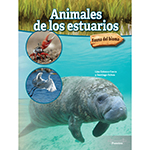
|
In Biome Beasts: Estuary Animals, readers will discover how and why animals survive and thrive in these sheltered biomes. Life in the estuary is always changing. Ocean tides of salt water flow in and out of the estuary and mix with the fresh water that flows from rivers and streams. The animals that swim or wade in the waters or make the mudflats their homes must have physical or social adaptations that allow them to live in the salty mix. The Biome Beasts series is NGSS-aligned and packed with interesting facts and vivid photos that introduce readers to a variety of land and water animals. Each book includes a glossary, comprehension questions, and an activity for home or the classroom. - Photo- and fact-filled nonfiction book for young readers supports NGSS standards
- Includes glossary, index, and comprehension questions
- Activity helps reader further engage with book content
NON-RETURNABLE: This item is non-returnable
|
Log in for Price
CD9781731654632
|
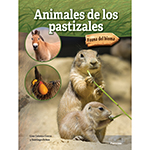
|
In Biome Beasts: Grassland Animals, readers will discover how these animals survive in prairies, steppes, and savannas around the world. Grassland biomes are home to a wide variety of animals. Whether grazing on grasses, building communities underground, or sailing overhead, animals have adapted to the challenges found in both temperate and tropical grassland biomes. The Biome Beasts series is NGSS-aligned and packed with interesting facts and vivid photos that introduce readers to a variety of land and water animals. Each book includes a glossary, comprehension questions, and an activity for home or the classroom. - Photo- and fact-filled nonfiction book for young readers supports NGSS standards
- Includes glossary, index, and comprehension questions
- Activity helps reader further engage with book content
NON-RETURNABLE: This item is non-returnable
|
Log in for Price
CD9781731654656
|
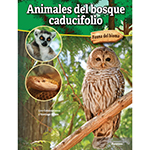
|
In Biome Beasts: Deciduous Forest Animals, readers will discover how deciduous beasts rise to the challenges of the climate in each biome. Deciduous forests around the world are home to a variety of animals. Animals that are part of the temperate deciduous forest biome must adapt to the conditions of all four seasons to survive. Animals that are part of the tropical and subtropical deciduous forest biomes must adapt to both the wet and dry seasons. The Biome Beasts series is NGSS-aligned and packed with interesting facts and vivid photos that introduce readers to a variety of land and water animals. Each book includes a glossary, comprehension questions, and an activity for home or the classroom. - Photo- and fact-filled nonfiction book for young readers supports NGSS standards
- Includes glossary, index, and comprehension questions
- Activity helps reader further engage with book content
NON-RETURNABLE: This item is non-returnable
|
Log in for Price
CD9781731654618
|

|
In Biome Beasts: Freshwater Pond Animals, readers will discover how these animals survive and thrive in freshwater pond biomes around the world. Life in a pond is exciting. Birds, bugs, and shrews skitter across the surface. Turtles and fish zip along under the water's surface. Beavers, herons, and others make themselves at home by the pond's edge. The Biome Beasts series is NGSS-aligned and packed with interesting facts and vivid photos that introduce readers to a variety of land and water animals. Each book includes a glossary, comprehension questions, and an activity for home or the classroom. - Photo- and fact-filled nonfiction book for young readers supports NGSS standards
- Includes glossary, index, and comprehension questions
- Activity helps reader further engage with book content
NON-RETURNABLE: This item is non-returnable
|
Log in for Price
CD9781731654649
|

|
In Biome Beasts: Desert Animals, readers will discover how desert animals survive and thrive in the driest places on the planet. Photos, text, and sidebars describe how these animals adapt to the challenging climate of these regions. Earth's four desert biomes – hot, semiarid, coastal, and cold – each have their own set of challenges for the living things within them. The Biome Beasts series is NGSS-aligned and packed with interesting facts and vivid photos that introduce readers to a variety of land and water animals. Each book includes a glossary, comprehension questions, and an activity for home or the classroom. - Photo- and fact-filled nonfiction book for young readers supports NGSS standards
- Includes glossary, index, and comprehension questions
- Activity helps reader further engage with book content
NON-RETURNABLE: This item is non-returnable
|
Log in for Price
CD9781731654625
|
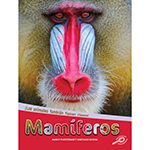
|
The book, Animals Have Classes Too!: Mammals, introduces young readers to animal classifications by explaining how mammals are grouped. Through photos, text, and sidebars, this title explores the differences and similarities between several classes, families, genera, and species of mammals, and how animal classification works. Readers will discover what traits put mammals in a class of their own. The Animals Have Classes Too! series for grades 1–3 gives an introduction to animal classifications, from kingdom to species. Each 24-page book in the series details how and why animals are classified, including common traits and various habitats, giving examples at each level. Each measuring 7.5 x 10, the titles in this series offer young readers an opportunity to learn more about Earth's magnificent animals. - Breaks down animal classification methods into easy-to-understand language
- Activity helps reader further engage with book content
- Includes glossary, index, and comprehension questions
NON-RETURNABLE: This item is non-returnable
|
Log in for Price
CD9781731654540
|
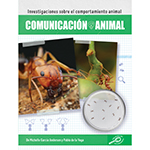
|
Why would scientists want to watch sleeping ants? That's one of the mysteries you'll solve as you explore amazing animal communication. Learn how elephants show affection, why the Canada lynx leaves scratches on trees, and how vervet monkeys know where to hide. In Amazing Animal Behaviors: Animal Communication, you'll discover that many animal behaviors are expressions of communication. Finally, be a scientist as you draw conclusions and make your own scientific study. What amazing communication will you observe? Let's discover the incredible ways that animals interact with the world with a real-life animal behavior case study! This engaging 24-page nonfiction book will help your child improve comprehension and build confidence with guided after-reading questions and a fun extension activity. The nonfiction leveled text features simple, easy-to-read pages with full-color pictures. Reading/teaching tips are also included. - Inquiry-based investigation of animal behaviors using real-life examples
- Vivid photos
- Includes after-reading questions, reading suggestions, and an activity to encourage further learning
NON-RETURNABLE: This item is non-returnable
|
Log in for Price
CD9781731654519
|
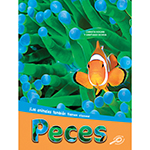
|
The book, Animals Have Classes Too!: Fish, introduces young readers to animal classifications by explaining how fish are grouped. Through photos, text, and sidebars, this title explores the differences and similarities between several classes, families, genera, and species of fish, and how animal classification works. Readers will discover the traits fish have that put them in a class of their own. The Animals Have Classes Too! series for grades 1–3 gives an introduction to animal classifications, from kingdom to species. Each 24-page book in the series details how and why animals are classified, including common traits and various habitats, giving examples at each level. Each measuring 7.5 x 10, the titles in this series offer young readers an opportunity to learn more about Earth's magnificent animals. - Breaks down animal classification methods into easy-to-understand language
- Activity helps reader further engage with book content
- Includes glossary, index, and comprehension questions
NON-RETURNABLE: This item is non-returnable
|
Log in for Price
CD9781731654571
|
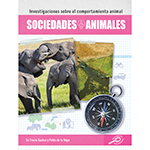
|
Why are those elephants following each other? That's one of the mysteries you'll solve as you explore amazing animal societies. In Amazing Animal Behaviors: Animal Societies, you'll learn how guppies teach each other, leafcutter ants build their nests, and wolves hunt their next meal! Finally, be a scientist as you draw conclusions and create your own scientific study. What amazing societies will you observe? Let's discover the incredible ways that animals interact within different societies in the wild with a real-life animal behavior case study! This engaging 24-page nonfiction book will help your child improve comprehension and build confidence with guided after-reading questions and a fun extension activity. The nonfiction leveled text features simple, easy-to-read pages with full-color pictures. Reading/teaching tips are also included. - Inquiry-based investigation of animal behaviors using real-life examples
- Vivid photos
- Includes after-reading questions, reading suggestions, and an activity to encourage further learning
NON-RETURNABLE: This item is non-returnable
|
Log in for Price
CD9781731654533
|
|





